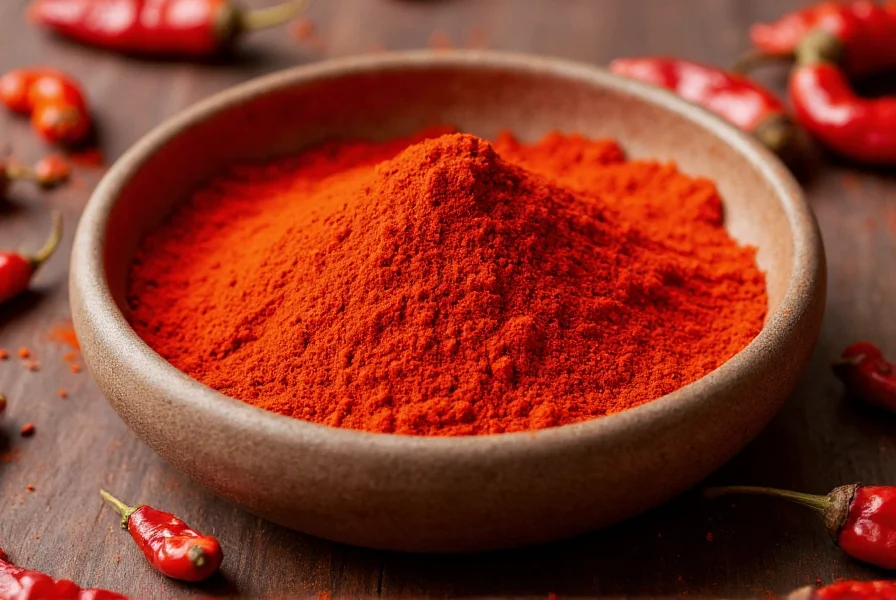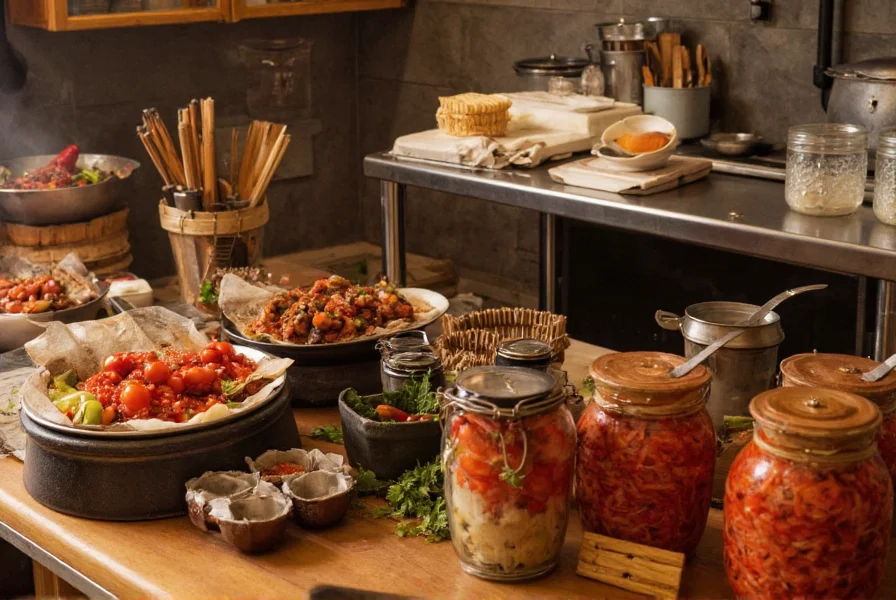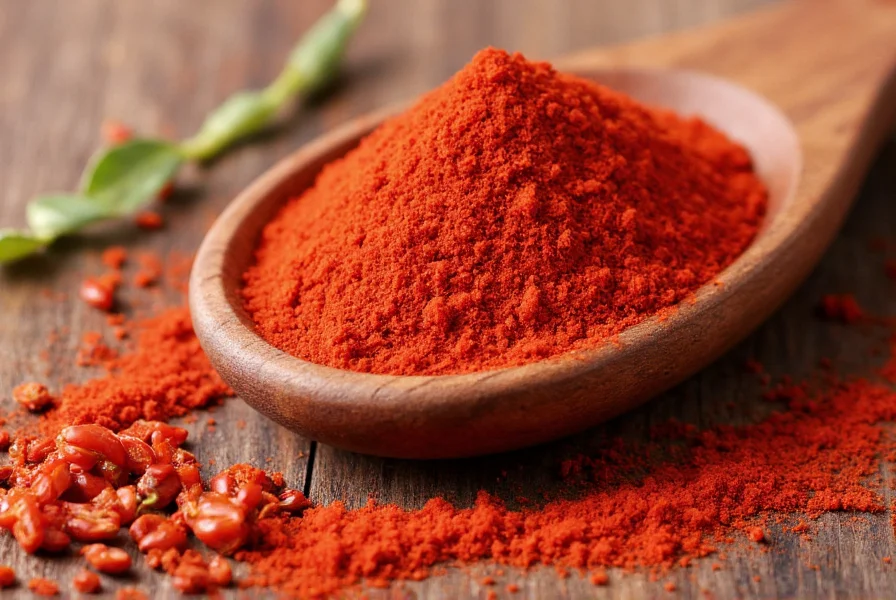Korean red pepper spice, or gochugaru (고추가루), represents one of Korea's most fundamental culinary ingredients. This distinctive spice transforms ordinary dishes into authentic Korean cuisine through its unique combination of flavor, color, and moderate heat. Understanding its characteristics helps home cooks and food enthusiasts recreate traditional Korean flavors with precision.
What Makes Gochugaru Unique
Authentic Korean red pepper spice differs significantly from other chili powders available globally. While American red pepper flakes tend to be hotter and more one-dimensional, gochugaru provides a nuanced flavor experience. The traditional production process involves harvesting fully ripe Korean chili peppers (typically Chilgochujang variety), removing stems and seeds, then sun-drying the peppers for several days before grinding.

Flavor Profile and Heat Level
Understanding korean red pepper flakes vs gochugaru reveals important distinctions. Gochugaru typically measures between 1,500-4,000 on the Scoville scale, placing it milder than cayenne pepper (30,000-50,000 SHU) but with more complexity than sweet paprika. The flavor profile includes:
- Mild to medium heat (varies by brand and processing)
- Subtle natural sweetness
- Earthy, slightly smoky notes
- Vibrant red color that enhances dish appearance
| Chili Powder Type | Scoville Heat Units | Flavor Characteristics |
|---|---|---|
| Korean Gochugaru | 1,500-4,000 | Sweet, smoky, complex |
| Cayenne Pepper | 30,000-50,000 | Sharp, one-dimensional heat |
| Sweet Paprika | 0-500 | Mild, sweet, no heat |
| Hot Paprika | 500-1,000 | Mild heat, slightly sweet |
Different Types of Korean Red Pepper Spice
Not all gochugaru is created equal. Korean markets typically offer two main varieties:
Fine Gochugaru (Mun-gochugaru)
This finely ground version works best for marinades, soups, and sauces where smooth texture matters. It dissolves easily and distributes color and flavor evenly throughout dishes. When exploring how to use korean red pepper powder in liquid-based recipes, this variety proves most effective.
Coarse Gochugaru (Tteok-gochugaru)
The coarsely ground variety maintains some texture, making it ideal for kimchi preparation and dishes where you want visible red pepper flakes. Many traditional kimchi recipes specifically call for this texture as it helps the spice adhere to cabbage leaves while allowing proper fermentation.
Culinary Applications in Korean Cooking
Korean red pepper spice serves as the foundation for numerous iconic dishes. Its role extends beyond mere heat provision to contributing essential color and complex flavor notes that define Korean cuisine.
Essential for Kimchi Production
No authentic kimchi recipe exists without gochugaru. The spice not only provides the characteristic red color but also contributes to the fermentation process. When preparing korean chili powder for kimchi recipes, cooks typically use coarse gochugaru to ensure proper distribution throughout the cabbage layers.
Base for Gochujang and Other Sauces
Gochugaru combines with glutinous rice, fermented soybeans, and sweeteners to create gochujang (Korean red pepper paste). Understanding the proper ratio of korean red pepper spice nutritional benefits versus other ingredients ensures balanced sauce development.
Substituting Korean Red Pepper Spice
Finding authentic gochugaru outside Korea can prove challenging. When determining the best substitute for gochugaru, consider both heat level and flavor complexity:
- Smoked paprika + cayenne (10:1 ratio) - Provides similar color with balanced heat
- Sweet paprika + red pepper flakes (3:1 ratio) - Closer flavor profile but less complex
- Aleppo pepper - Similar moderate heat with fruitiness, though different flavor notes
Important note: Avoid using pure cayenne as a substitute, as its intense heat and lack of sweetness will dramatically alter dish flavor profiles.
Purchasing and Storage Guidelines
When searching for where to buy authentic korean red pepper flakes, look for these indicators of quality:
- Packaged product with Korean writing (look for 구쳐를)
- Bright red color (dull color indicates age)
- Fragrant aroma when opened
- Manufacture date within past 6-12 months
Proper storage maintains freshness and potency. Keep gochugaru in an airtight container away from light and heat. For extended storage, refrigeration preserves flavor for up to one year, while freezing extends shelf life to two years. Exposure to air and light causes rapid degradation of both color and flavor compounds.

Nutritional Profile and Health Considerations
Beyond its culinary applications, Korean red pepper spice offers several potential health benefits. Capsaicin, the compound responsible for chili heat, has been studied for various physiological effects. However, gochugaru contains lower capsaicin levels than hotter chilies, making it more accessible for regular consumption.
Research suggests potential benefits from moderate consumption of korean red pepper spice nutritional benefits including:
- Metabolism support through thermogenesis
- Rich in vitamin C and antioxidants
- Potential anti-inflammatory properties
- May support cardiovascular health
As with any spice, moderation remains key. Those with sensitive digestive systems should introduce gochugaru gradually to assess tolerance.
Common Mistakes to Avoid
Many home cooks make critical errors when working with Korean red pepper spice:
- Using the wrong grind - Substituting fine for coarse (or vice versa) affects texture and flavor release
- Over-toasting - Brief toasting enhances flavor, but excessive heat destroys delicate compounds
- Improper storage - Leaving containers open to air and light degrades quality rapidly
- Misjudging heat levels - Different brands vary significantly in spiciness
Conclusion
Korean red pepper spice (gochugaru) represents far more than just a source of heat in Korean cuisine. Its complex flavor profile, vibrant color, and culinary versatility make it indispensable for authentic Korean cooking. By understanding its characteristics, proper usage, and storage requirements, cooks can elevate their Korean dishes to new levels of authenticity. Whether making kimchi, tteokbokki, or Korean fried chicken, the right gochugaru application transforms ingredients into genuine Korean culinary experiences.
Frequently Asked Questions
Is gochugaru the same as Korean red pepper flakes?
Yes, gochugaru is the Korean term for Korean red pepper flakes or powder. The term refers specifically to the traditional Korean chili powder made from sun-dried Korean red peppers, distinct from other international chili powders.
How spicy is authentic Korean red pepper spice?
Authentic gochugaru typically ranges from 1,500-4,000 Scoville Heat Units, making it milder than cayenne pepper but with more complexity than sweet paprika. The heat level varies by brand and processing method, with coarse varieties often slightly milder than fine grinds.
Can I substitute paprika for Korean red pepper spice?
You can create a substitute using 3 parts sweet paprika to 1 part red pepper flakes, but the flavor won't be identical. For better results, use 10 parts smoked paprika to 1 part cayenne. True gochugaru has a unique sweet-smoky flavor that's difficult to replicate exactly with substitutes.
Why does my gochugaru lose color quickly?
Gochugaru's vibrant red color degrades when exposed to light, air, and heat. To preserve color, store in an opaque, airtight container in a cool, dark place. Refrigeration or freezing extends shelf life significantly. Fresh gochugaru should have a bright red color - dull or brownish tones indicate degradation.
What's the difference between coarse and fine gochugaru?
Coarse gochugaru (tteok-gochugaru) has a flaky texture ideal for kimchi and dishes where you want visible spice particles. Fine gochugaru (mun-gochugaru) is powder-fine and dissolves easily in liquids, making it better for sauces, soups, and marinades. Traditional recipes often specify which type to use for optimal results.











 浙公网安备
33010002000092号
浙公网安备
33010002000092号 浙B2-20120091-4
浙B2-20120091-4